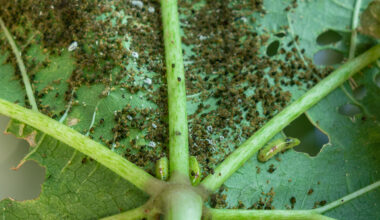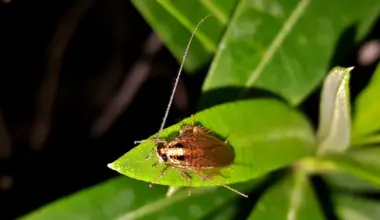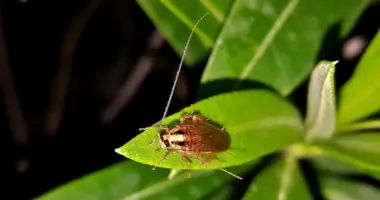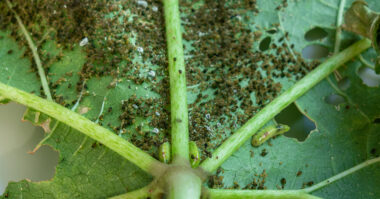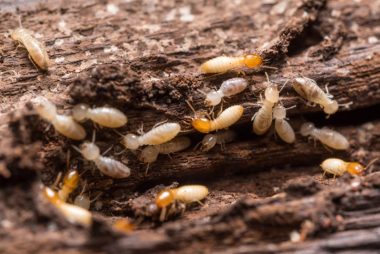A veritable scourge of crops just a few decades ago, the white worm is now doing less damage… but is still a pest that can damage gardens and give gardeners a hard time! Tips and tricks to recognize it and get rid of it.
We present you in this article 2 plants that deter cutworms: the pyrethrum of Dalmatia and the Sage.
Contents
How do you know if you have cutworms?
The cutworm sometimes causes big damages by cutting the collar of the young plants. We then see them sagging for no apparent reason. Leaves and stems are also attacked.
A multitude of vegetables are affected: lettuce, cabbage, spinach, potatoes.
If you dig a little around the affected individuals you will surely find a large gray caterpillar that curls up on itself. It only comes out at night to commit its misdeeds and spends the day underground.
2 Plants that deter cutworms
The pyrethrum of Dalmatia
The pyrethrum of Dalmatia is a plant with perennial flowers of the family of the Asters (compound). It is also called the insecticidal chrysanthemum or the cinerary leaf tansy. Its flower is close to that of the daisies to which it resembles. The plant is cultivated for its flowers that contain a natural insecticide: pyrethrin. This substance acts on the nervous system of insects.
In our gardens, the pyrethrum of Dalmatia has repellent properties for many insects. It keeps away cutworms, but also aphids, mites, whiteflies, carrot and cabbage flies and red spiders.
From plant pyrethrum, the chemical industry has created a synthetic molecule that is much more efficient but also more toxic (especially for fish).
Sage
The officinal sage is delicious in our culinary preparations, but planted in the garden, it is also a good insecticide. Indeed, cutworms like other insects in general do not appreciate it unlike gourmets.
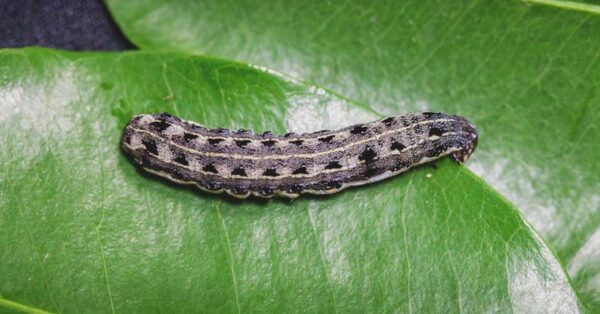
Others way to protect my plants from cutworms?
Prevention
The principle applies to most parasites and diseases, but it is particularly true in the case of the moth: prevention is better than cure. Indeed, once the caterpillars are installed in the soil, it is very difficult to get rid of them. Some preventive gestures :
- In spring, you can apply an anti-insect veil to protect your vegetable crops.
- Another solution: make sprays of pyrethrum (or tansy) decoction or wormwood infusion, which act as a repellent and repel female butterflies looking for a host plant.
- Use a pheromone trap.
- Finally, if your plants have been attacked by caterpillars of moths during the year, you can, during the winter which follows, you can, during the winter which follows, carry out hoeing at the foot of the plants, or even turn over the ground (in the vegetable garden for example): this makes it possible to bring to the surface the caterpillars which hibernate in the ground, and thus to expose them to the frost and to the predators (birds).
Protect the plants
If the attacks are recurrent, you can place protections around each plant. Use for that purpose tins of which you will cut the bottom. It also works with glasses or plastic bottles.
As soon as you plant them, push them 2 inches into the ground with the plant in the center. The protection must also protrude at least 2 inches above the ground.
3/4 weeks later remove them so as not to hinder the growth of the plants.
Biological treatments against cutworms
You can find commercially available crops of small nematodes to spread over your land area to be treated or protected. These microscopic nematodes are cutworm parasites that they eliminate in the soil without danger to other insects or animals.
Ecological treatments
- Trap the moths with a mixture of beer and molasses for example (with or without pyrethrum added) in a container lit by a light bulb (UV if possible).
- Organic growers plant near the tansy or spray the plants with a tansy decoction to keep the cutworms away.
Establish physical barriers around the seedlings with cut-out PVC bottles or cans from which you remove the bottoms:
-
- Push them 2 inches into the ground.
- Make them protrude to prevent larvae access to young plants.
- Some wrap the collars of the tomato plants with aluminum foil when transplanting them.
- Young caterpillars cannot tolerate too wet soil. The young caterpillars do not tolerate too much moisture in the soil, so keep it that way by frequent watering during the larval period. Nevertheless, humidity is difficult to determine exactly and an excess of humidity that is not supported by certain plants can lead to the development of cryptogamic diseases.
Natural repellents
To prevent females from laying eggs, it may be wise to use herbal repellents. Water the soil regularly with tomato, tansy or wormwood manure.
Hens and other predators
Many animals feed on these fat caterpillars. Moles, blackbirds and ground beetles are among them. Chickens will get rid of caterpillars very efficiently in winter.
Summary
Cutworms are caterpillars of moths, more precisely moths. Cutworms are rarely seen because they live underground and only come out at night. On the other hand, their ravages can be seen on young plants that are cut at their base.
There are many ways to get rid of this caterpillar. The pyrethrum of Dalmatia and Sage are the 2 main repellent plants against cutworms. It is also possible to use alternative methods such as tomato manure, tansy manure or wormwood manure.

